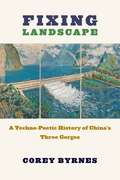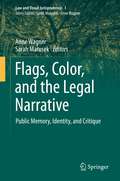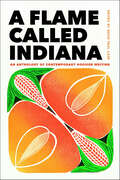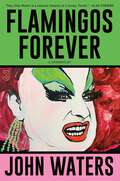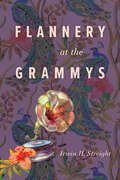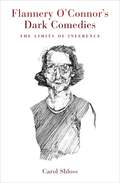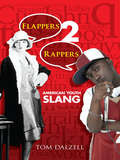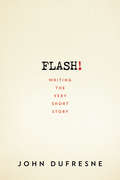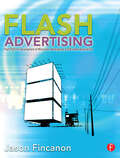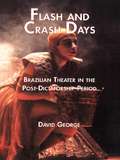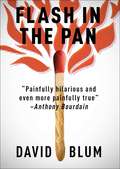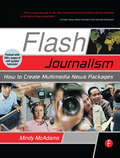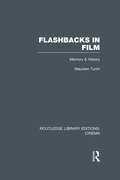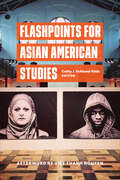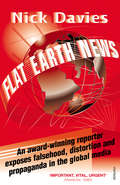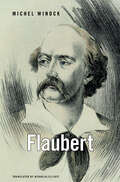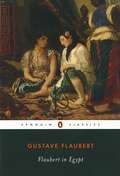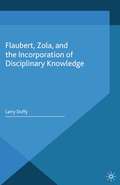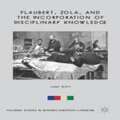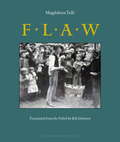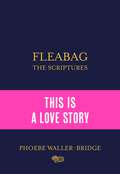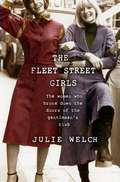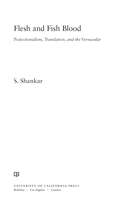- Table View
- List View
Fixing Landscape: A Techno-Poetic History of China’s Three Gorges (Studies of the Weatherhead East Asian Institute, Columbia University)
by Corey ByrnesIn 1994, workers broke ground on China’s Three Gorges Dam. By its completion in 2012, the dam had transformed the ecology of the Yangzi River, displaced over a million people, and forever altered a landscape immortalized in centuries of literature and art. The controversial history of the dam is well known; what this book uncovers are its unexpected connections to the cultural traditions it seems to sever. By reconsidering the dam in relation to the aesthetic history of the Three Gorges region over more than two millennia, Fixing Landscape offers radically new ways of thinking about cultural and spatial production in contemporary China.Corey Byrnes argues that this monumental feat of engineering can only be understood by confronting its status as a techno-poetic act, a form of landscaping indebted to both the technical knowledge of engineers and to the poetic legacies of the Gorges as cultural site. Synthesizing methods drawn from premodern, modern, and contemporary Chinese studies, as well as from critical geography, art history, and the environmental humanities, Byrnes offers innovative readings of eighth-century poetry, paintings from the twelfth through twenty-first centuries, contemporary film, nineteenth-century British travelogues, and Chinese and Western maps, among other sources. Fixing Landscape shows that premodern poetry and visual art have something urgent to tell us about a contemporary experiment in spatial production. Poems and paintings may not build dams, but Byrnes argues that the Three Gorges Dam would not exist as we know it without them.
Flags, Color, and the Legal Narrative: Public Memory, Identity, and Critique (Law and Visual Jurisprudence #1)
by Anne Wagner Sarah MarusekThe book deals with the identification of “identity” based on culturally specific color codes and images that conceal assumptions about members of a people comprising a nation, or a people within a nation. Flags narrate constructions of belonging that become tethered to negotiations for power and resistance over time and throughout a people’s history. Bennet (2005) defines identity as “the imagined sameness of a person or social group at all times and in all circumstances”. While such likeness may be imagined or even perpetuated, the idea of sameness may be socially, politically, culturally, and historically contested to reveal competing pasts and presents. Visually evocative and ideologically representative, flags are recognized symbols fusing color with meaning that prescribe a story of unity. Yet, through semiotic confrontation, there may be different paths leading to different truths and applications of significance. Knowing this and their function, the book investigates these transmitted values over time and space. Indeed, flags may have evolved in key historical periods, but contemporaneously transpire in a variety of ways. The book investigates these transmitted values: Which values are being transmitted? Have their colors evolved through space and time? Is there a shift in cultural and/or collective meaning from one space to another? What are their sources? What is the relationship between law and flags in their visual representations? What is the shared collective and/or cultural memory beyond this visual representation? Considering the complexity and diversity in the building of a common memory with flags, the book interrogates the complex color-coded sign system of particular flags and their meanings attentive to a complex configuration of historical, social and cultural conditions that shift over time.Advance Praise for Flags, Color, and the Legal Narrative"In an epoch of fragmentation, isolation and resurgent nationalism, the flag is waved but often forgotten. The flag, its colors, narratives, shape and denotations go without saying. The red flag over China, the Star-Spangled Banner, the Tricolore are instantly recognisable and over determined, representing a people, a nation, a culture, languages, legacies, leaders. In this fabulous volume flags are revealed as concentrated, complex, chromatic assemblages of people, place and power in and through time. It is in bringing a multifocal awareness of the modes and meanings of flag and color in public representations that is particular strength. Editors Anne Wagner and Sarah Marusek have gathered critical thinkers from the North and South, East and West, to help know the essential and central - yet often forgotten and not seen - work of flags and color in narratives of nation, conflict, struggle and law. A kaleidoscopic contribution to the burgeoning field of visual jurisprudence, this volume is essential to comprehending the ocular machinery through which power makes, and is seen to make, the world."Kieran Tranter, Chair of Law, Technology and Future, Faculty of Law, Queensland University of Technology, Australia"This comprehensive volume of essays could not be arriving at a more opportune time. The combined forces of climate change, inequality, and pandemic are causing instability and painful recognitions of our collective uncertainties about nationhood and globalism. In the United States, where I am writing these few lines, our traditional red/white/blue flag has been collapsed into two colors: Red and Blue. While these colors have semiotically deep texts, the division of the country into these two colors began with television stations designing how to report the vote count in the 2000 presidential election year creating "red" and "blue" parties and states. The colors stuck and have become customary. We Americans are told all the time by pundits that we are a deeply divided nation, as proven by uns
A Flame Called Indiana: An Anthology of Contemporary Hoosier Writing
by Doug Paul CaseAs Kurt Vonnegut, Indiana's most famous writer, once remarked, "Wherever you go, there is always a Hoosier doing something important there."A Flame Called Indiana features 65 writers of fiction, nonfiction, and poetry who have all had the pleasure of being Hoosiers at one time or another. Curated by the Indiana University Bloomington creative writing department, this diverse anthology features everything from the immigrant experience to the Indianapolis 500 to science fiction. Altogether, the work stands testament to the vibrancy and creativity of this Midwest state.An excellent gift for your favorite reader and an important resource for creative writers, A Flame Called Indiana serves as both a chronicle of where Indiana's writing is today and a beacon to those who'll take it where it's going next.
Flamingo Supplementary Reader (English Second Language) class 11 - GSTB
by Gujarat State School Textbook BoardThe "Flamingo Supplementary Reader" for 11th grade English (Second Language), published by the Gujarat State School Textbook Board, provides students with a variety of engaging and diverse reading materials aimed at enhancing their English proficiency. It features a collection of stories, folk tales, poems, and moral lessons designed to promote both language development and critical thinking. The supplementary reader complements the main textbook by encouraging self-learning, creative thinking, and reading for pleasure. Through relatable content and exercises, it helps students develop comprehension, expand their vocabulary, and improve their language skills. The reader also focuses on real-life applications of English and aims to support students in excelling at national and international levels, particularly in competitive exams.
Flamingos Forever: A Screenplay
by John WatersOne part of John Waters’ iconic Trash Trilogy, Flamingos Forever is a dark-comedy screenplay about a drag queen trying to retain her title of “Filthiest Person in the World.”Fifteen years after the events of Pink Flamingos, Babs Johnson returns to Baltimore from a life spent largely in bus station lavatories, only to find that she once again has to fight for the right to claim the title of “World’s Filthiest Person.” Her nemesis Connie Marble’s sister, Vera Venninger, and her necrophiliac husband, Wilbur, are in her way. So begins a new battle of filth.This raucous, filthy—and essential!—volume in John Waters’ oeuvre never made it to the screen, so this is readers’ and his legions of fans’ one chance to see how this ghastly and irreverent saga meets its end!
Flannery at the Grammys
by Irwin H. StreightA devout Catholic, a visionary—and some say prophetic—writer, Flannery O’Connor (1925–1964) has gained a growing presence in contemporary popular culture. While O’Connor professed that she did not have an ear for music, allusions to her writing appear in the lyrics and narrative form of some of the most celebrated musicians on the contemporary music scene. Flannery at the Grammys sounds the extensive influence of this southern author on the art and vision of a suite of American and British singer-songwriters and pop groups. Author Irwin H. Streight invites critical awareness of O’Connor’s resonance in the products of popular music culture—in folk, blues, rock, gospel, punk, heavy metal, and indie pop songs by some of the most notable figures in the popular music business. Streight examines O'Connor's influence on the art and vision of multiple Grammy Award winners Bruce Springsteen, Lucinda Williams, R.E.M., and U2, along with celebrated songwriters Nick Cave, PJ Harvey, Sufjan Stevens, Mary Gauthier, Tom Waits, and others. Despite her orthodox religious, and at times controversial, views and limited literary output, O’Connor has left a curiously indelible mark on the careers of the successful musicians discussed in this volume. Still, her acknowledged influence and remarkable presence in contemporary pop and rock songs has not been well noted by pop music critics and/or literary scholars. Many years in the making, Flannery at the Grammys achieves groundbreaking work in cultural studies and combines in-depth literary and pop music scholarship to engage the informed devotee and the casual reader alike.
Flannery O'Connor's Dark Comedies: The Limits of Inference (Louisiana Purchase Collection)
by Carol ShlossIn Flannery O'Connor's Dark Comedies, Carol Shloss moves from biographical, thematic, and theological approaches and instead focuses her criticism on the successes and failures of O'Connor as a rhetorician. This valuable study of O'Connor's style uses reader-response theory to dissect the author's use of hyperbole, distortion, allusion, analogy, the dramatization of extreme religious experience, the manipulation of judgment through narrative voice, and direct address to the reader. Schloss aims to return Flannery O'Connor to her readers on fathomable terms, to offer a rhetorical, rather than theological, perspective from which to understand the country preachers, square-jawed farm wives, wise rubes, foolish intellectuals, huckster Bible salesmen, killers, and other "good country people" who populate O'Connor's fiction.
Flappers 2 Rappers: American Youth Slang
by Tom DalzellThis entertaining, highly readable book pulses with the vernacular of young Americans, tracing slang terms and expressions from the end of the nineteenth century to the present. In addition to alphabetical listings for each decade, it features fascinating word histories and sidebars about language and culture—jazz cat jive, the argot of Beat poets, gritty inner-city street talk, and other captivating colloquialisms.A master storyteller and wordsmith, Tom Dalzell is the author of The Concise New Partridge Dictionary of Slang and Unconventional English and The Routledge Dictionary of Modern American Slang and Unconventional English. In Flappers 2 Rappers, he presents more than just lists of words. His introductions to each chronological chapter offer fascinating insights into the ways in which slang reflects the era's historical mood and significance. Great for browsing, this unique reference will delight students of history as well as word and language enthusiasts.
FLASH!: The Art Of Writing The Very Short Story
by John DufresneAn engaging and frank guide to writing the very short story, full of sound advice, exemplary models, and provocative exercises. The history of fiction has been dominated by the novel and the short story. But now a brave new genre has emerged: very brief fiction. FLASH! identifies the qualities that make for excellent flash fiction, demystifies the writing process, and guides writers by exercise and example through the world of the very short story. John Dufresne’s characteristic warmth, wit, and humor remind writers of the joy in the creative process, making this a perfect guide for any writer interested in trying a new form.
Flash Advertising: Flash Platform Development of Microsites, Advergames and Branded Applications
by Jason FincanonCreate awe-inspiring, mind-blowing Flash ads, microsites, advergames, and branded applications that engage consumers and demonstrate their worth to clients. Creating Flash Advertising delivers the nuts and bolts of the development process from initial design conception to ad completion. You'll learn the best practices for: Mastering the myriad of ad specs, deadlines, quality and version control issues and creating ads that balance campaign goals with design constraints. Preparing and building ads with team and QC standards. Using forms and data in ads without file bloatt. File optimization techniques for swf files 3rd party rich media technologies that transcend the 30k banner. Integrating video into sites and banners. Social media applications. Trafficking and tracking ads for impressions, interactions, clicks, and conversions.Using ActionScript to save development time and implement team standards. Published projects developed with the practices and AS code presented in the book are available on the companion website http://www.flashadbook.com
Flash and Crash Days: Brazilian Theater in the Post-Dictatorship Period
by David GeorgeFirst published in 2000. Routledge is an imprint of Taylor & Francis, an informa company.
Flash in the Pan: Life and Death of an American Restaurant
by David Blum"Finally back in print, Flash in the Pan is the original--and still the best--reportage on the life and death of an American restaurant, a ground level view of every phase of its life. From the early, hope filled planning stages to the last, humiliating moments, it's a tragi-comic epic of hubris and human folly. Painfully hilarious and even more painfully true. This is a welcome reissue of a restaurant classic that should be read by every culinary and food service student in America and sit comfortably next to Orwell's Down and Out on every shelf." --Anthony Bourdain, author of Kitchen ConfidentialIn 1990, journalist David Blum got backstage access to the life and death of The Falls, a downtown Manhattan restaurant that captured the 1980s in all its extravagant excess. Its owners--a tanned, Brahmin barkeep and a handsome Irish firefighter from Queens--partnered with movie star pal Matt Dillon to cater to New York's most glamorous models, actors, and writers. Flash in the Pan captured in hilarious detail the quick decline and disastrous fall of The Falls, and has become a classic cautionary tale for anyone who might harbor the fantasy of opening a restaurant. David Blum is the editor of Kindle Singles, the storefront for high quality longform writing on Kindle. He was previously the editor in chief of The Village Voice and has written for New York magazine, Esquire, Vanity Fair, The New Yorker, and The New York Times Magazine. Flash in the Pan, first published in 1992, was his first book.
Flash Journalism: How to Create Multimedia News Packages
by Mindy McAdamsThis book will assist journalists and Flash developers who are working together to bring video, audio, still photos, and animated graphics together into one complete Web-based package.This book is not just another Flash book because it focuses on the need of journalists to tell an accurate story and provide accurate graphics. This book will illustrate how to animate graphics such as maps, illustrations, and diagrams using Flash. It will show journalists how to integrate high-quality photos and audio interviews into a complete news package for the Web.Each lesson in the book is followed by a learning summary so that journalists can review the skills they have acquired along the way. In addition, the book's six case studies will allow readers to study the characteristics of news packages created with Flash by journalists and Web developers at The Washington Post, MSNBC.com, and Canadian and European news organizations.
The Flash Press: Sporting Male Weeklies In 1840s New York
by Helen Lefkowitz Horowitz American Antiquarian Society Staff Timothy J. Gilfoyle Patricia Cline CohenObscene, libidinous, loathsome, lascivious. Those were just some of the ways critics described the nineteenth-century weeklies that covered and publicized New York City’s extensive sexual underworld. Publications like the Flash and the Whip—distinguished by a captivating brew of lowbrow humor and titillating gossip about prostitutes, theater denizens, and sporting events—were not the sort generally bound in leather for future reference, and despite their popularity with an enthusiastic readership, they quickly receded into almost complete obscurity. Recently, though, two sizable collections of these papers have resurfaced, and in The Flash Press three renowned scholars provide a landmark study of their significance as well as a wide selection of their ribald articles and illustrations. <p><p> Including short tales of urban life, editorials on prostitution, and moralizing rants against homosexuality, these selections epitomize a distinct form of urban journalism. Here, in addition to providing a thorough overview of this colorful reportage, its editors, and its audience, the authors examine nineteenth-century ideas of sexuality and freedom that mixed Tom Paine’s republicanism with elements of the Marquis de Sade’s sexual ideology. They also trace the evolution of censorship and obscenity law, showing how a string of legal battles ultimately led to the demise of the flash papers: editors were hauled into court, sentenced to jail for criminal obscenity and libel, and eventually pushed out of business. But not before they forever changed the debate over public sexuality and freedom of expression in America’s most important city.
Flashbacks in Film: Memory & History (Routledge Library Editions: Cinema)
by Maureen TurimThe flashback is a crucial moment in a film narrative, one that captures the cinematic expression of memory, and history. This author’s wide-ranging account of this single device reveals it to be an important way of creating cinematic meaning. Taking as her subject all of film history, the author traces out the history of the flashback, illuminating that history through structuralist narrative theory, psychoanalytic theories of subjectivity, and theories of ideology. From the American silent film era and the European and Japanese avant-garde of the twenties, from film noir and the psychological melodrama of the forties and fifties to 1980s art and Third World cinema, the flashback has interrogated time and memory, making it a nexus for ideology, representations of the psyche, and shifting cultural attitudes.
Flashpoints for Asian American Studies
by Cathy J. Schlund–Vials, EditorEmerging from mid-century social movements, Civil Rights Era formations, and anti-war protests, Asian American studies is now an established field of transnational inquiry, diasporic engagement, and rights activism. These histories and origin points analogously serve as initial moorings for Flashpoints for Asian American Studies, a collection that considers–almost fifty years after its student protest founding--the possibilities of and limitations inherent in Asian American studies as historically entrenched, politically embedded, and institutionally situated interdiscipline. Unequivocally, Flashpoints for Asian American Studies investigates the multivalent ways in which the field has at times and—more provocatively, has not—responded to various contemporary crises, particularly as they are manifest in prevailing racist, sexist, homophobic, and exclusionary politics at home, ever-expanding imperial and militarized practices abroad, and neoliberal practices in higher education.
Flat Earth News: An Award-winning Reporter Exposes Falsehood, Distortion and Propaganda in the Global Media
by Nick DaviesDoes ‘fake news’ really exist? Find out from the ultimate insider.After years of working as a respected journalist, Nick Davies, in this shocking exposé, reveals what really goes on behind the scenes of this contentious industry. From a prestigious newspaper that allowed intelligence agencies to plant fiction in its columns, to the newsroom that routinely rejected stories due to racial bias, to the number of papers that accepted cash bribes. Gripping, thought-provoking and revelatory, this is an insider’s look at one of the most tainted professions.‘Meticulous, fair-minded and utterly gripping’ Telegraph‘Powerful and timely...his analysis is fair, meticulously researched and fascinating’ Observer
Flaubert
by Michel WinockA “well-researched, elegantly written” study of the life and work of 19th-century French author Gustave Flaubert (Roger Pearson, University of Oxford).Michel Winock’s biography situates Gustave Flaubert’s life and work in France’s century of great democratic transition. Flaubert did not welcome the egalitarian society predicted by Tocqueville. Wary of the masses, he rejected the universal male suffrage hard won by the Revolution of 1848, and he was exasperated by the nascent socialism that promoted the collective to the detriment of the individual. But above all, he hated the bourgeoisie. Vulgar, ignorant, obsessed with material comforts, impervious to beauty, the French middle class embodied for Flaubert every vice of the democratic age. His loathing became a fixation—and a source of literary inspiration.Flaubert depicts a man whose personality, habits, and thought are a stew of paradoxes. The author of Madame Bovary and Sentimental Education spent his life inseparably bound to solitude and melancholy, yet he enjoyed periodic escapes from his “hole” in Croisset to pursue a variety of pleasures: fervent friendships, society soirées, and a whirlwind of literary and romantic encounters. He prided himself on the impersonality of his writing, but he did not hesitate to use material from his own life in his fiction. Nowhere are Flaubert’s contradictions more evident than in his politics. An enemy of power who held no nostalgia for the monarchy or the church, he was nonetheless hostile to collectivist utopias.Despite declarations of the timelessness and sacredness of Art, Flaubert could not transcend the era he abominated. Rejecting the modern world, he paradoxically became its celebrated chronicler and the most modern writer of his time.Praise for Flaubert“This generous study ingeniously builds a narrative around Flaubert’s own words—from not only the novels but also voluminous correspondence and unpublished work. Adding light background and analysis, Winock allows the mind of the Master to shine.” —The New Yorker“It is precisely the historical background of Flaubert’s times, both its conscious and its invisible impingements on the writer’s sensibility, on which Winock is especially revelatory . . . Michel Winock has written a compelling and stylish biography, and Nicholas Elliott has brought it into English with flair and skill.” —Bruce Whiteman, Hudson Review“Noted French historian Winock’s biography succeeds in presenting a fresh portrait of a man plagued by paradoxes . . . Winock provides absorbing background related to the country’s social and political scenes that occurred during his subject’s lifetime.” —Erica Swenson Danowitz, Library Journal
Flaubert in Egypt: A Sensibility on Tour
by Gustave Flaubert Francis SteegmullerAt once a classic of travel literature and a penetrating portrait of a 'sensibility on tour', Flaubert in Egypt wonderfully captures the young writer's impressions during his 1849 voyages. Using diaries, letters, travel notes, and the evidence of Flaubert's travelling companion, Maxime Du Camp, Francis Steegmuller reconstructs his journey through the bazaars and brothels of Cairo and down the Nile to the Red Sea.
Flaubert, Zola, and the Incorporation of Disciplinary Knowledge (Palgrave Studies in Modern European Literature)
by L. DuffyThis book is about how France's two major documentary authors of the nineteenth century – Gustave Flaubert and Émile Zola – incorporate medical knowledge about the body into their works, and in so doing exploit its metaphorical potential of the body to engage in critical reflection about the accumulation and reconfiguration of knowledge.
Flaubert, Zola, and the Incorporation of Disciplinary Knowledge
by Larry DuffyFlaubert, Zola and the Incorporation of Disciplinary Knowledge transcends traditional author studies to focus on institutional dimensions of professional practices and knowledge concerning the body in nineteenth-century France, and on their articulation by literary and other texts. It examines how institutional developments in medicine and pharmacy are 'incorporated' within literary texts, arguing that such incorporation reflects acute concern with the body, and with knowledge considered metaphorically as body. In its innovative focus on incorporation as metaphor, the book explores theoretical relationships between body and text, exploiting the rich metaphorical potential of the institutional, professional body, constituted by discourse and associated with bodies of disciplinary knowledge. The institutional body 'incorporates' itself; the literary text 'incorporates' knowledge precisely about the body's incorporation of substances and practices. Offering cultural history of certain medical, pharmaceutical and scientific discourses, this book problematizes the boundaries between literary and other forms of discourse, themselves analogical to boundaries between different fields of disciplinary knowledge.
Flaw
by Magdalena Tulli Bill JohnstonA single streetcar line runs around the sleepy suburban square of an unnamed city. One day--out of nowhere--a group of hapless refugees pour from the streetcar and set up camp in the square. The residents grow hostile to the disruption and chaos, and eventually take matters into their own hands... Flaw is Tulli's most intense and personally motivated work to date, while still retaining the signature mind-and word-play so admired by critics and her growing readership.
Fleabag: The Sunday Times Bestseller (Nhb Modern Plays Ser.)
by Phoebe Waller-BridgeBestseller in the UK, Sunday Times, November 2019.The complete Fleabag. Every Word. Every Side-eye. Every Fox.Fleabag: The Scriptures includes new writing from Phoebe Waller-Bridge alongside the filming scripts and the never-before-seen stage directions from the Golden Globe, Emmy and BAFTA winning series. 'Perfect' Guardian'Perfect' Daily Telegraph'Perfect' Stylist 'Perfect' Independent'Perfect' Evening Standard 'Perfect' Metro'Perfect' Irish Times 'Perfect' RTE'Perfect' Spectator'Perfect' Refinery29'Perfect' Catholic Herald'Perfection' Financial Times***HAIRDRESSERNO.(pointing to Claire)That is EXACTLY what she asked for.FLEABAGNo it's not. We want compensation.HAIRDRESSERClaire?CLAIREI've got two important meetings and I look like a pencil.HAIRDRESSERNO. Don't blame me for your bad choices. Hair isn't everything.FLEABAGWow.HAIRDRESSERWhat?FLEABAGHair. Is. Everything. We wish it wasn't so we could actually think about something else occasionally. But it is. It's the difference between a good day and a bad day. We're meant to think that it is a symbol of power, a symbol of fertility, some people are exploited for it and it pays your fucking bills. Hair is everything, Anthony.
The Fleet Street Girls: The women who broke down the doors of the gentlemen's club
by Julie Welch<p>When Julie Welch called in her first ever football report at the Observer, an entire room of men fell silent. Heart in her mouth, Julie waited for the voice on the other end of the line to declare it passable. She'd done it. She was the first ever female football reporter.<p> <p>In The Fleet Street Girls, Julie looks back at the steps that led to that moment, from the National Union of Journalists nearly calling a strike when she dared to write an article as a mere secretary (despite allowing men who weren't journalists to write for the same pages), and many other battles in between.<p> <p>Julie also shines a light on the other trail-blazing women who were climbing the ladder against all odds, from Lynn Barber (of An Education fame) to Wendy Holden, a war correspondent for the Daily Telegraph, and many more, as well as some of the secretaries whom the men overlooked but who actually knew everything. Pioneers one and all.<p> <p>The Fleet Street Girls is a fascinating story of the hopes and despairs, triumphs and tribulations of a group of women in the glitzy heyday of journalism, where they could be interviewing Elton John one moment and ducking flying bullets or fighting off the sex pests the next. At a time when Fleet Street was the biggest, cosiest all-male club you can imagine, and the interests of half the human race were consigned to 'The Women's Page' in the paper, we follow Julie and her contemporaries through dramas, excitement and sheer fun in their battle to make sure women's voices were heard.<p>
Flesh and Fish Blood
by Subramanian ShankarIn Flesh and Fish Blood Subramanian Shankar breaks new ground in postcolonial studies by exploring the rich potential of vernacular literary expressions. Shankar pushes beyond the postcolonial Anglophone canon and works with Indian literature and film in English, Tamil, and Hindi to present one of the first extended explorations of representations of caste, including a critical consideration of Tamil Dalit (so-called untouchable) literature. Shankar shows how these vernacular materials are often unexpectedly politically progressive and feminist, and provides insight on these oft-overlooked--but nonetheless sophisticated--South Asian cultural spaces. With its calls for renewed attention to translation issues and comparative methods in uncovering disregarded aspects of postcolonial societies, and provocative remarks on humanism and cosmopolitanism, Flesh and Fish Blood opens up new horizons of theoretical possibility for postcolonial studies and cultural analysis.
